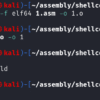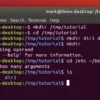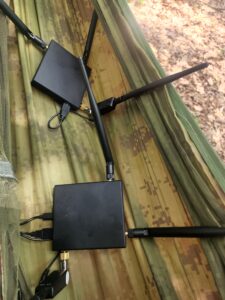Unleashing BED: The Hidden Arsenal of Kali Linux
Welcome to MelanatedSpy, your trusted guide through the labyrinth of cybersecurity. Today, we’re diving deep into one of the lesser-known but incredibly powerful tools in the Kali Linux arsenal: BED (Bruteforce Exploit Detector). This post will not only introduce you to BED but also provide a detailed walkthrough of how to wield it effectively in your cybersecurity toolkit.
What is BED?
BED, short for Bruteforce Exploit Detector, is a network protocol fuzzer. In simpler terms, it’s a tool designed to test the robustness of network services by sending malformed or unexpected packets to a target system. Think of it as a digital stress test for protocols like HTTP, FTP, SMTP, and more. BED helps identify vulnerabilities that could potentially be exploited by malicious actors.
Unlike tools that rely on brute force to gain unauthorized access, BED focuses on finding weaknesses in the way services handle unexpected inputs. This makes it a powerful tool for ethical hackers and penetration testers who are looking to secure systems rather than exploit them.
Why Use BED?
In the world of cybersecurity, knowledge is power. Knowing where your defenses are weak allows you to strengthen them before an attacker can exploit them. BED is particularly useful because:
- Protocol Versatility: It supports multiple protocols, making it a versatile tool for testing various services.
- Simplicity: BED is straightforward to use, requiring minimal setup or configuration.
- Effectiveness: By focusing on malformed packets, BED can uncover vulnerabilities that might not be detected by other tools.
Getting Started with BED
Before you can start using BED, you need to ensure it’s installed on your system. If you’re running Kali Linux, BED might already be included. If not, you can install it using the following commands:
sudo apt update
sudo apt install bed
Once installed, you can verify that BED is working by running:
bed -h
This will display the help menu, showing you the various options and protocols supported by BED.
How to Use BED
Using BED is as simple as specifying the protocol, target IP, and port you want to test. Here’s a step-by-step guide:
1. List Supported Protocols
To see which protocols BED supports, use the -l option:
bed -l
This will display a list of protocols, such as HTTP, FTP, SMTP, POP3, and more.
2. Test a Specific Protocol
To test a specific protocol on a target system, use the -s option to specify the protocol, -t for the target IP, and -p for the port. For example, to test an HTTP service running on port 80:
bed -s http -t 192.168.1.10 -p 80
3. Analyze the Results
BED will send a series of malformed packets to the specified service and display the responses. Look for any anomalies or unexpected behavior, as these could indicate a vulnerability.
4. Document Your Findings
As an ethical hacker, it’s crucial to document any vulnerabilities you discover. Include details such as the protocol tested, the nature of the vulnerability, and any recommendations for mitigation.
Real-World Example: Testing an FTP Service
Let’s say you’ve identified an FTP service running on a target system. Here’s how you might use BED to test it:
- Run BED:
bash
bed -s ftp -t 192.168.1.20 -p 21
- Monitor the Output: BED will send malformed packets to the FTP service and display the server’s responses. Pay close attention to any crashes or error messages, as these could indicate a vulnerability.
- Take Action: If you discover a vulnerability, notify the system administrator and provide recommendations for securing the service. For example, updating the FTP server software or applying a patch.
Ethical Considerations
At MelanatedSpy, we believe in using our skills for good. While BED is a powerful tool, it must be used responsibly. Always obtain explicit permission before testing a system, and never use BED to target systems you don’t own or have authorization to test.
Unauthorized use of BED is not only unethical but also illegal. As cybersecurity professionals, our goal is to protect and secure systems, not to exploit them.
Advanced Tips for Using BED
For those looking to take their BED skills to the next level, here are some advanced tips:
- Combine with Other Tools: Use BED in conjunction with tools like Nmap or Metasploit to gain a more comprehensive understanding of a system’s vulnerabilities.
- Automate Testing: Create scripts to automate the use of BED across multiple targets or protocols. This can save time and ensure thorough testing.
- Explore Custom Protocols: If you’re dealing with a proprietary or custom protocol, consider modifying BED’s source code to test it. This requires programming knowledge but can be incredibly effective.
- Stay Updated: Vulnerabilities are constantly evolving. Stay informed about the latest threats and updates to BED to ensure you’re using it effectively.
Conclusion: The Spy’s Arsenal
BED is more than just a tool; it’s a gateway to understanding the hidden vulnerabilities that exist in the systems we rely on every day. By using BED responsibly, you can help make the digital world a safer place.
At MelanatedSpy, we’re committed to empowering ethical hackers and cybersecurity professionals with the knowledge and tools they need to succeed. Whether you’re a seasoned expert or just starting your journey, we’re here to guide you every step of the way.
So, are you ready to take your skills to the next level? The shadows are calling. What will you uncover next?

















 HACK RF RADIO AND NET HUNTER PHONE
HACK RF RADIO AND NET HUNTER PHONE



 USING WIGLE + WIFITE + ALFA ADAPTER
USING WIGLE + WIFITE + ALFA ADAPTER
 Daily practice and real-time application is key to perfection
Daily practice and real-time application is key to perfection